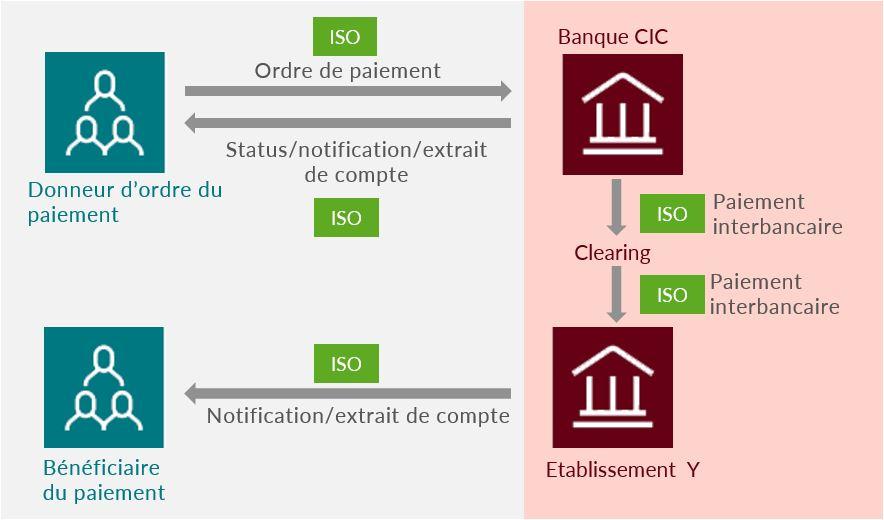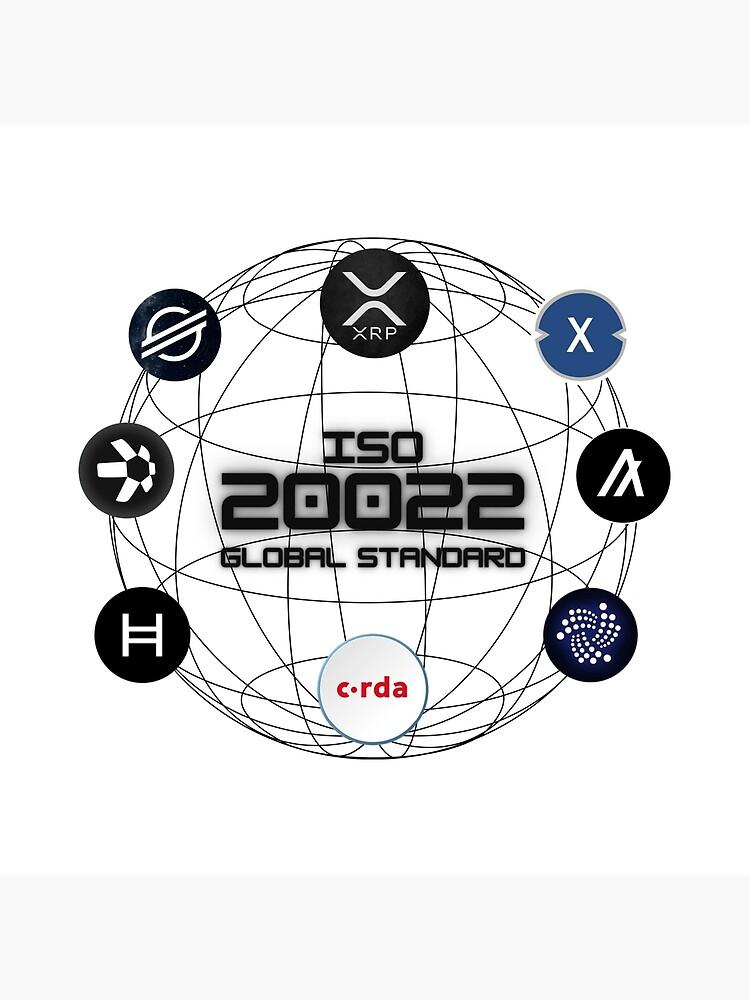In an era where digital transformation and efficiency have become the cornerstones of competitive advantage, the financial landscape is undergoing a seismic shift. The transition from traditional compliance frameworks to the ISO 20022 standard is redefining how financial transactions are initiated, processed, and recorded. This shift is not merely a technical upgrade; it represents an opportunity to unlock hidden value within organizations by enhancing interoperability, improving data richness, and fostering innovation. As businesses navigate this crucial transition, understanding the implications and potential benefits of ISO 20022 can empower them to not only comply with regulatory expectations but also to thrive in a rapidly evolving market. Join us as we explore the multifaceted journey from compliance to value creation, revealing how organizations can harness the power of ISO 20022 to redefine their operational paradigms and drive meaningful transformation.
Exploring the Benefits of ISO 20022 for Financial Institutions
The shift to ISO 20022 offers substantial advantages for financial institutions, transforming compliance into a strategic asset. By adopting this standard, institutions can enhance their interoperability, making it easier to exchange information seamlessly across diverse financial networks. The key benefits include:
- Standardization: Eliminating inconsistencies in data formats and enhancing clarity.
- Rich Data: Supporting a broader range of data types, enabling detailed transaction information.
- Cost Efficiency: Reducing processing costs through improved automation and streamlined workflows.
Moreover, ISO 20022 paves the way for innovative financial products and services, ultimately driving competitiveness. Financial institutions can leverage enhanced data analytics capabilities to personalize offerings and improve customer experiences. This standard also aligns with regulatory requirements, helping to minimize compliance risks. Key advantages include:
| Advantage | Description |
|---|---|
| Improved Compliance | Streamlined reporting and adherence to regulatory guidelines. |
| Global Reach | Facilitating cross-border transactions with standardized messaging. |
| Future-Proofing | Adapting to evolving financial technologies and consumer needs. |

Navigating the Challenges of Transitioning to ISO 20022
Transitioning to ISO 20022 presents a unique set of challenges that financial institutions must strategically navigate to fully harness its benefits. First and foremost, understanding the complexity of existing systems is crucial. Legacy systems may require significant upgrades or replacements, and comprehending the intricacies of these technologies is vital. Institutions must also prioritize stakeholder engagement to ensure that all parties—ranging from IT teams to compliance units—are aligned on goals and timelines. Additionally, evaluating the data mapping and migration requirements will facilitate a smooth transition, as it determines how existing messages will be transformed into the ISO 20022 format.
Furthermore, investing in comprehensive training and resources is essential to equip teams with the necessary skills for the transition. Organizations should foster a culture of continuous learning where cross-department collaborations enhance knowledge sharing. To ease the transition, a focus on phased implementation can mitigate risks associated with sudden changes. The following table illustrates some key challenges and potential strategies for addressing them:
| Challenge | Strategy |
|---|---|
| Legacy System Integration | Conduct a thorough systems audit and invest in middleware solutions. |
| Stakeholder Resistance | Engage all stakeholders with clear communication and training sessions. |
| Data Migration Issues | Create a detailed data mapping plan and run test migrations. |

Strategies for Effective Implementation and Stakeholder Engagement
Successful implementation of ISO 20022 hinges on a multi-faceted approach that harmonizes technology with human collaboration. To foster strong stakeholder engagement, organizations should prioritize clear communication about the benefits of switching to ISO 20022. Including stakeholders early in the migration process can lead to greater buy-in and a smoother transition. Workshops and informational sessions can help demystify the standard, offering stakeholders a platform to voice concerns, ask questions, and understand how the change will impact their operations. Gathering feedback through these sessions not only aids in the cultivation of trust but also ensures that all voices are considered in shaping the implementation strategy.
In addition to proactive communication, establishing a robust project governance structure is essential. This involves creating a dedicated transition team composed of representatives from various departments—IT, compliance, and business development—ensuring that the perspective of every stakeholder is integrated into decision-making. Engaging stakeholders through regular updates, progress reports, and collaborative tools can enhance transparency and accountability. A well-defined roadmap detailing timelines, milestones, and roles can help to align efforts and expectations, making it easier to track progress and adapt to any challenges that arise. Below is a simple table that outlines key elements to monitor throughout the implementation process:
| Element | Description | Frequency |
|---|---|---|
| Stakeholder Meetings | Gather insights and address concerns | Bi-weekly |
| Progress Reports | Summarize achievements and next steps | Monthly |
| Feedback Surveys | Assess stakeholder satisfaction and suggestions | Quarterly |

Maximizing Value Creation through ISO 20022 Adoption
By embracing ISO 20022, organizations can harness a plethora of advantages that extend far beyond mere regulatory compliance. This modern messaging standard enables financial institutions to achieve significant levels of interoperability, flexibility, and efficiency across various platforms and channels. Adopting ISO 20022 opens up opportunities for organizations to enhance their operational processes and create new revenue streams by offering innovative financial products. The richness of data encapsulated in ISO 20022 messages allows for better decision-making, improved customer experiences, and tailored services that meet the evolving needs of clients.
To fully leverage the transition, organizations should focus on key areas that contribute to value creation, including:
- Enhanced Data Quality: The structured format of ISO 20022 improves data accuracy and completeness, facilitating better reporting and analytics.
- Cost Reduction: Streamlined processes and reduced transaction costs are achievable through automation enabled by ISO 20022.
- Integration Capabilities: The standardized messaging system allows for seamless integration with digital platforms and regulatory frameworks.
Furthermore, organizations may consider incorporating strategic training programs that empower teams to utilize the full potential of the ISO 20022 framework. By doing so, they will be equipped to navigate hurdles and capitalize on opportunities in the evolving financial landscape.
Closing Remarks
As we draw the curtains on this exploration of “Unlocking Value: Transitioning from Compliance to ISO 20022,” it’s clear that the road ahead is paved with both challenges and opportunities. The shift to ISO 20022 represents more than just a regulatory compliance measure; it is a gateway to innovation, enhanced data richness, and improved interoperability within the financial ecosystem. Organizations that embrace this transition will not only meet compliance obligations but will also harness the power of standardized messaging to drive efficiency and foster deeper customer relationships.
In this rapidly evolving landscape, staying informed and adaptable is key. By unlocking the value inherent in ISO 20022, businesses can position themselves at the forefront of the digital transformation arena, ready to respond to the needs of a dynamic marketplace. As we continue to navigate this journey, let us remember that every challenge surmounted is an opportunity created, and every step taken toward embracing ISO 20022 is a step towards a more connected and agile future in finance.
Thank you for joining us on this insightful journey. Here’s to embracing change and realizing the potential that lies in the transition to ISO 20022.
